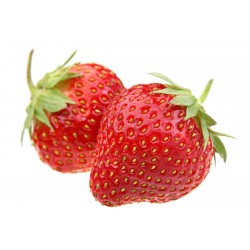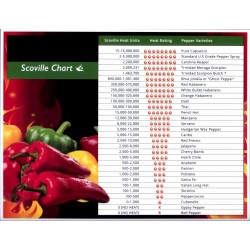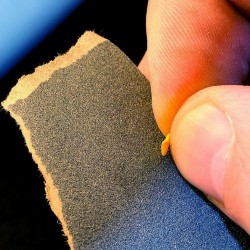Seeds Gallery Com,
5/
5
<p>L’<b>échelle de Scoville</b><span> </span>est une<span> </span>échelle de mesure<span> </span>de la force des<span> </span>piments<span> </span>inventée en<span> </span>1912<span> </span>par le<span> </span>pharmacologue<span> </span>Wilbur Scoville<span> </span>dans le cadre de son travail dans la société<span> </span>Parke-Davis, à<span> </span>Détroit. Son but est de renseigner sur le piquant (pseudo-chaleur). La<span> </span>capsaïcine<span> </span>est une des nombreuses<span> </span>molécules<span> </span>responsables de la force des<span> </span>piments.</p>
<h2><span id="D.C3.A9finition"></span><span class="mw-headline">Définition</span></h2>
<p>Pour établir son classement, Wilbur Scoville préparait une solution de piment frais entier réduit en purée mélangé avec de l’eau<span> </span>sucrée. Cette solution était généralement testée par cinq personnes et tant que la sensation de brûlure du piment subsistait, il en augmentait la dilution. Lorsque la sensation de<span> </span>brûlure<span> </span>disparaissait, la valeur de la dilution servait de mesure à la force du piment.</p>
<p>Par exemple, un piment doux, ne contenant pas de capsaïcine, avait un degré de zéro, ce qui signifie aucune sensation de brûlure détectable même sans dilution. À l'opposé, pour les piments les plus forts, un taux de 300 000 signifiait que leur extrait devait être dilué 300 000 fois avant que la capsaïcine ne devienne indétectable.</p>
<table class="wikitable"><caption><b>Échelle de Scoville</b></caption>
<tbody><tr><th>Unités Scoville</th>
<th>Produit ou variété de piment</th>
</tr><tr><td align="right">16 000 000 000</td>
<td>Résinifératoxine<sup id="cite_ref-chilliworld.com_1-0" class="reference">1</sup></td>
</tr><tr><td align="right">5 300 000 000</td>
<td>Tinyatoxine</td>
</tr><tr><td align="right">16 000 000</td>
<td>Capsaïcine<span> </span>pure<sup id="cite_ref-2" class="reference">2</sup></td>
</tr><tr><td align="right">15 000 000</td>
<td>Dihydrocapsaïcine</td>
</tr><tr><td align="right">9 200 000</td>
<td>Nonivamide</td>
</tr><tr><td align="right">9 100 000</td>
<td>Nordihydrocapsaïcine<sup id="cite_ref-chilliworld.com_1-1" class="reference">1</sup></td>
</tr><tr><td align="right">8 600 000</td>
<td>Homodihydrocapsaïcine<span> </span>et<span> </span>Homocapsaïcine <span class="indicateur-langue" title="Équivalent de l’article « Homocapsaïcine » dans une autre langue">(en)</span></td>
</tr><tr><td align="right">2 000 000 – 5 300 000</td>
<td>Bombe d'auto-défense,</td>
</tr><tr><td align="right">3 180 000</td>
<td>Pepper X, le plus fort du monde depuis 2017 (le<span> </span>Carolina Reaper<span> </span>tenait la<span> </span><abbr class="abbr" title="Première">1<sup>re</sup></abbr><span> </span>place dans le<span> </span>livre Guinness des records<span> </span>2013, le Pepper X a été commercialisé peu après)<sup id="cite_ref-3" class="reference">3</sup></td>
</tr><tr><td align="right">1 569 300 - 2 200 000</td>
<td>Piment<span> </span>Carolina Reaper, le plus fort du monde répertorié de 2013 à 2017<sup id="cite_ref-4" class="reference">4</sup><sup class="reference cite_virgule">,</sup><sup id="cite_ref-5" class="reference">5</sup>.</td>
</tr><tr><td align="right">1 200 000 - 2 009 231</td>
<td>Piment<span> </span>Trinidad Moruga Scorpion, le piment le plus fort au monde jusqu'en 2013<sup id="cite_ref-6" class="reference">6</sup></td>
</tr><tr><td align="right">1 463 700</td>
<td>Piment Trinidad Scorpion Butch Taylor<sup id="cite_ref-7" class="reference">7</sup></td>
</tr><tr><td align="right">1 359 000</td>
<td>Piment<span> </span><i>Naga Viper</i></td>
</tr><tr><td align="right">1 067 286</td>
<td>Piment<span> </span><i>Infinity chili</i></td>
</tr><tr><td align="right">1 001 304</td>
<td>Piment Les Nagas<span> </span><i>Bhut Jolokia</i><span> </span>(alias Bih Jolokia, Naga Jolokia, Ghost Pepper),<span> </span><i>Naga Dorset</i>, Naga Morich</td>
</tr><tr><td align="right">800 000</td>
<td>Variétés croisées Naga x Habanero; Habanaga, Nagabon</td>
</tr><tr><td align="right">577 000</td>
<td>Piment habanero<span> </span>(var.<span> </span><i>Red Savina</i>)</td>
</tr><tr><td align="right">100 000 – 325 000</td>
<td>Piment habanero<span> </span>(originellement Javanero, piment antillais ou piment cabri à la Réunion), piment<span> </span><span class="lang-en" lang="en" xml:lang="en"><i>Scotch bonnet</i></span>,<span> </span>piment rocoto,<span> </span><span class="lang-en" lang="en" xml:lang="en"><i>Jamaican Hot Pepper</i></span>,<span> </span><span class="lang-en" lang="en" xml:lang="en"><i>Bulgarian carrot</i></span>, Piment Fatalii</td>
</tr><tr><td align="right">100 000 – 160 000</td>
<td>Pipérine<sup id="cite_ref-narasimhan-19782_8-0" class="reference">8</sup><sup class="reference cite_virgule">,</sup><sup id="cite_ref-govindarajan-19802_9-0" class="reference">9</sup><sup class="reference cite_virgule">,</sup><sup id="cite_ref-lawless_10-0" class="reference">10</sup></td>
</tr><tr><td align="right">50 000 – 100 000</td>
<td>Piment<span> </span><span class="lang-en" lang="en" xml:lang="en"><i>Thaï Hot</i></span>, piment Malagueta, piment chiltepin, piment tabasco</td>
</tr><tr><td align="right">30 000 – 60 000</td>
<td>Piment pequin,<span> </span>piment oiseau.</td>
</tr><tr><td align="right">30 000 – 50 000</td>
<td>Piment de Cayenne</td>
</tr><tr><td align="right">10 000 – 30 000</td>
<td>Piment serrano,<span> </span>Hari Mirchi<sup id="cite_ref-11" class="reference">11</sup></td>
</tr><tr><td align="right">5 000 – 16 000</td>
<td>Poivre<span> </span>blanc, poivre noir<sup id="cite_ref-narasimhan-19782_8-1" class="reference">8</sup><sup class="reference cite_virgule">,</sup><sup id="cite_ref-govindarajan-19802_9-1" class="reference">9</sup><sup class="reference cite_virgule">,</sup><sup id="cite_ref-lawless_10-1" class="reference">10</sup><sup class="reference cite_virgule">,</sup><sup id="cite_ref-12" class="reference">12</sup></td>
</tr><tr><td align="right">5 000 – 10 000</td>
<td>Piment jaune (<span class="lang-en" lang="en" xml:lang="en"><i>Hungarian Hot Wax</i></span>)</td>
</tr><tr><td align="right">7 000 – 8 000</td>
<td>Sauce Tabasco Habanero Hot<sup id="cite_ref-:0_13-0" class="reference">13</sup></td>
</tr><tr><td align="right">4 500 – 5 000</td>
<td>Piment d'Anaheim (var.<span> </span><i>New Mexico</i>)</td>
</tr><tr><td align="right">2 500 – 8 000</td>
<td>Piment jalapeño</td>
</tr><tr><td align="right">2 500 – 5 000</td>
<td>Sauce Tabasco Original rouge<sup id="cite_ref-:0_13-1" class="reference">13</sup></td>
</tr><tr><td align="right">1 500 – 2 500</td>
<td>Piment d'Espelette, piment Rocotillo,<span> </span>Sauce sriracha<sup id="cite_ref-:0_13-2" class="reference">13</sup></td>
</tr><tr><td align="right">1 000 – 1 500</td>
<td>Piment poblano</td>
</tr><tr><td align="right">500 – 2 500</td>
<td>Piment d'Anaheim</td>
</tr><tr><td align="right">600 – 1200</td>
<td>Sauce Tabasco Jalapeño verte<sup id="cite_ref-14" class="reference">14</sup><sup class="reference cite_virgule">,</sup><sup id="cite_ref-:0_13-3" class="reference">13</sup></td>
</tr><tr><td align="right">550 – 600</td>
<td>Harissa</td>
</tr><tr><td align="right">100 – 500</td>
<td>Paprika<span> </span>doux, piments doux</td>
</tr><tr><td align="right">0 – 100</td>
<td>Poivron</td>
</tr></tbody></table><p>Le produit contenu dans les bombes aérosols d’autodéfense au<span> </span>gaz poivre<span> </span>a une valeur comprise entre<span> </span><span class="nowrap"><span title="">2 000 000</span><span> </span>et<span> </span><span title="">5 300 000</span></span><span> </span>(matériel de police). La capsaïcine pure donne une mesure de 16 000 000<sup id="cite_ref-cliff-1992_15-0" class="reference">15</sup>. Autrement dit, 1 <abbr class="abbr" title="partie par million">ppm</abbr><span> </span>de capsaïcine équivaut à 16 unités Scoville.</p>
<h2><span></span><span class="mw-headline">Échelle simplifiée</span></h2>
<p>Pour faciliter son interprétation dans un contexte culinaire, l'échelle de Scoville est aussi présentée sous la forme d'une table de 0 à 10.</p>
<table class="wikitable"><caption><b>Table simplifiée de Scoville</b></caption>
<tbody><tr><th>Degré</th>
<th>Appréciation</th>
<th>Unités Scoville</th>
<th>Exemple</th>
</tr><tr><td>0</td>
<td>neutre</td>
<td>0 – 100</td>
<td>Poivron</td>
</tr><tr><td>1</td>
<td>doux</td>
<td>100 – 500</td>
<td>Paprika<span> </span>doux</td>
</tr><tr><td>2</td>
<td>chaleureux</td>
<td>500 – 1 000</td>
<td>Piment d'Anaheim</td>
</tr><tr><td>3</td>
<td>relevé</td>
<td>1 000 – 1 500</td>
<td>Piment poblano</td>
</tr><tr><td>4</td>
<td>chaud</td>
<td>1 500 – 2 500</td>
<td>Piment d'Espelette</td>
</tr><tr><td>5</td>
<td>fort</td>
<td>2 500 – 5 000</td>
<td>Piment Chimayo</td>
</tr><tr><td>6</td>
<td>ardent</td>
<td>5 000 – 15 000</td>
<td>Paprika<span> </span>fort</td>
</tr><tr><td>7</td>
<td>brûlant</td>
<td>15 000 – 30 000</td>
<td>Piment Cascabel</td>
</tr><tr><td>8</td>
<td>torride</td>
<td>30 000 – 50 000</td>
<td>Piment de Cayenne<sup id="cite_ref-16" class="reference">16</sup></td>
</tr><tr><td>9</td>
<td>volcanique</td>
<td>50 000 – 100 000</td>
<td>Piment tabasco <span class="indicateur-langue" title="Équivalent de l’article « Piment tabasco » dans une autre langue">(en)</span></td>
</tr><tr><td>10</td>
<td>explosif</td>
<td>100 000 et plus</td>
<td>Piment habanero</td>
</tr></tbody></table><h2><span class="mw-headline" id="Mesure_par_chromatographie_en_phase_liquide">Mesure par chromatographie en phase liquide</span></h2>
<p>Un des points faibles du test de Scoville était son imprécision, liée à la subjectivité humaine, notamment par le fait que l'habitude de consommation du piment change le niveau personnel de sensibilité : un piment peut être considéré comme très fort par une personne peu habituée au piment et sembler doux à une personne consommant fréquemment du piment, et depuis l'enfance. Cette imprécision est aussi renforcée par le fait que la force des piments d'une même variété peut varier fortement en raison de l'ensoleillement, voire du terroir. C'est pourquoi on utilise aujourd’hui la<span> </span>chromatographie en phase liquide<span> </span>pour mesurer le taux de capsaïcine d’une variété de piment<sup id="cite_ref-uhl-1996_17-0" class="reference">17</sup>.</p>









